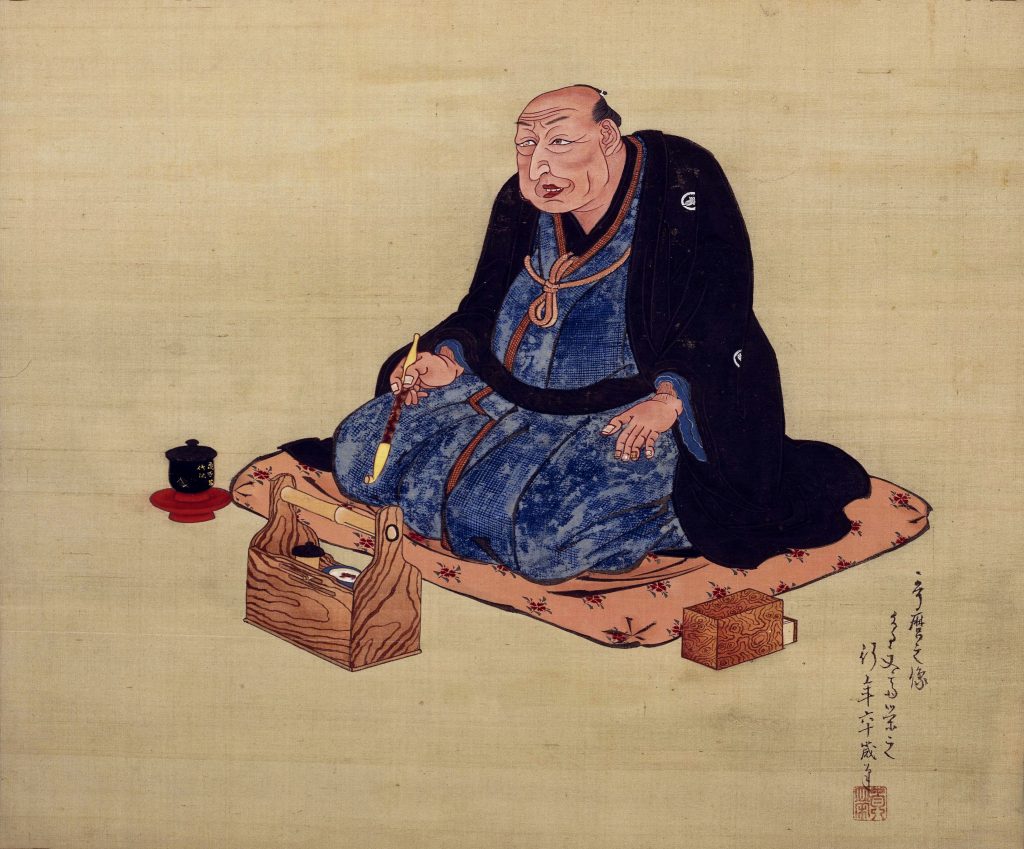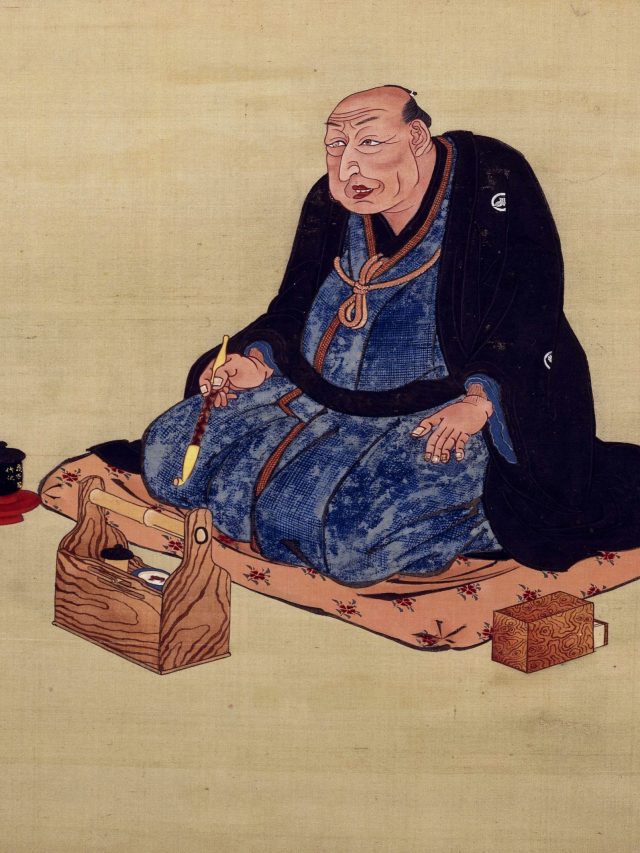Whether it is anime or manga, when it comes to art forms, Japan has produced only excellence. Even the ukiyo-e (translating to ‘floating world’) woodblock prints and paintings have enthralled art enthusiasts over the years. The practice flourished during the late 1600s and continued till the 19th century. An artist who is frequently credited with popularizing the artfrom is Kitagawa Utamaro. He is seldom known as Utamaro (his first name) or Utamaro Kitagawa. Not many know about the master designer, but upon reading Kitagawa Utamaro biography, readers would understand his distinct painting style and his contribution to the popular Japanese art form.
Who Was Kitagawa Utamaro?
The most important question remains – ‘Who was Kitagawa Utamaro?’ Kitagawa Utamaro (1753 – 1806) was a preeminent ukiyo-e artist of the Edo (modern-day Tokyo) period (1603 – 1868). Although much of his early life remains a mystery, he was propelled to fame through his iconic depictions of courtesans, kabuki actors, sumo wrestlers, and beautiful women, celebrating the essence of the ukiyo-e genre, which focused on hedonism. He was an influential member of the Katsukawa school, which preached the ‘yakusha-e’ prints. Utamaro Kitagawa is often considered the progenitor of the art movement Japonism.
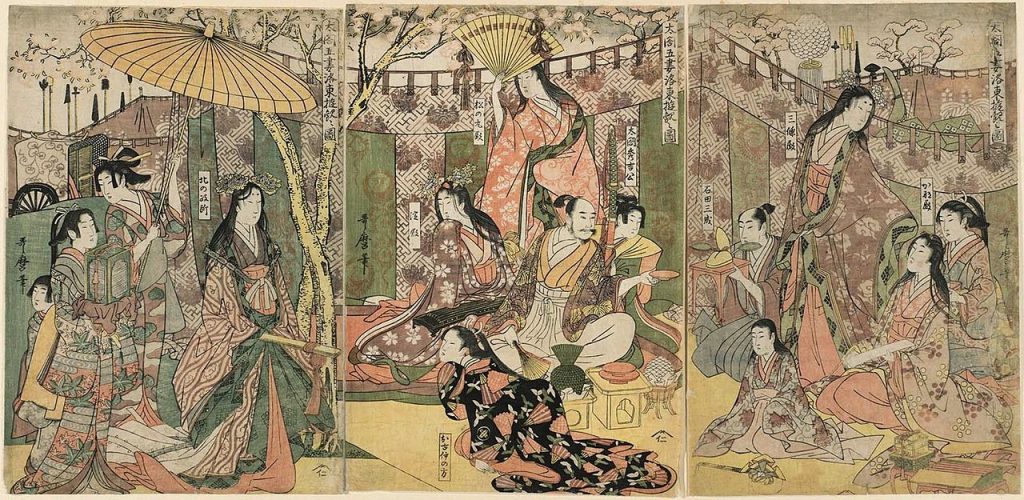
Even though Utamaro Kitagawa gathered immense success both nationally and internationally, his life was not without controversy. In 1804, he faced government censorship and imprisonment due to his portrayal of Toyotomi Hideyoshi, the ruler of the period and a historical figure in a series of prints. For this, he was manacled for fifty days and their publishers sustained heavy fines.
Kitagawa Utamaro Artwork Style
Even though Kitagawa Utamaro did not birth the ‘bijin-ga’ (beautiful women) portraits, he embedded his particular nuances in them. Earlier, these paintings featured women in their entirety or as a group. Utamaro Kitagawa focused on the upper body of an individual subject, also known as the ‘okubi-e’ style. It allowed him to bring focus to their face (bringing meticulous attention to detail) and nape (considered to be the most sensual part of a woman’s body). Kitagawa Utamaro artwork featured figures drawn with fluid and curved lines, connoting a sense of elegance. It must be noted that although he often portrayed women, his work had always dignified women, whether they were drawn in the role of a mother or a courtesan.
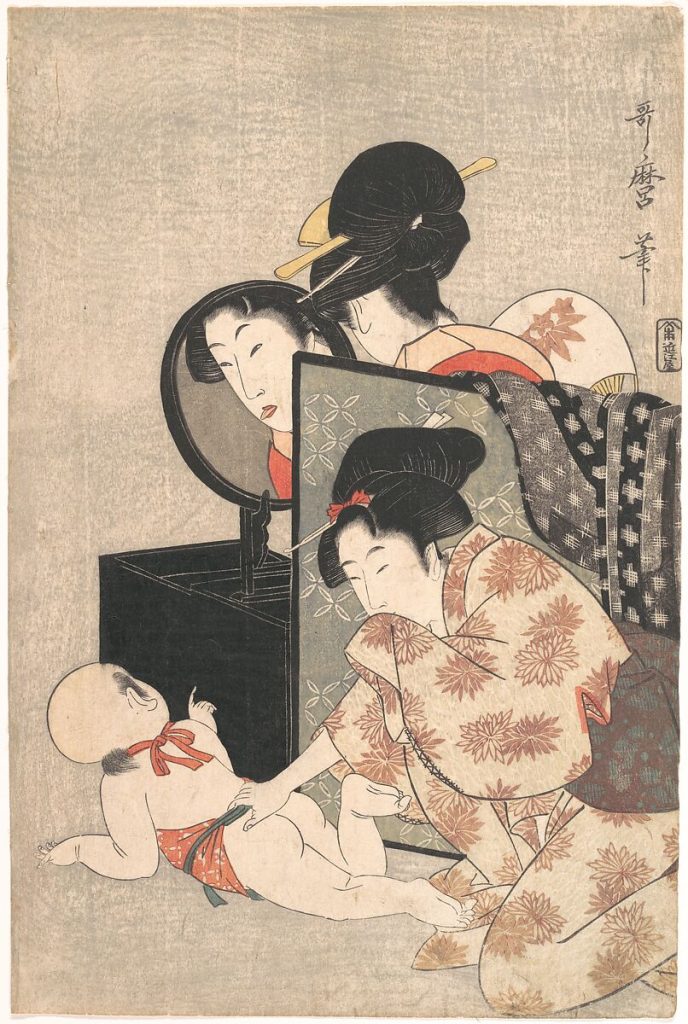
Kitagawa Utamaro paintings are characterized by delicate expressions, contourless faces, and subtle features, a nod to their personalities. It may be said that the expressions were more realistic than the women themselves. This is because the women he portrayed were elongated figures, their faces longer than broad, with tiny eyes, small lips, long noses, and diminutive shoulders. He used multiple woodblocks for different colours, ensuring a vibrant palette which increased the visual appeal of his prints and his paintings. Due to his vivid artworks, Utamaro’s popularity grew in Europe, where his prints and paintings influenced the Impressionist Mary Cassatt.
Kitagawa Utamaro Paintings
In his life, Kitagawa Utamaro produced more than 2000 prints, illustrated over thirty books, and made numerous paintings. Two of them have been discussed below.
Three Beauties of the Present Day
Utamaro presents a triptych of women, each radiating a distinctive charm. The one in the seemingly presiding position is the renowned geisha Tomimoto Toyohina with a primrose crest gracing her kimono sleeve. The woman on the right is a teahouse owner’s daughter, Naniwaya Kita deciphered by the paulownia crest on her hand fan. The third woman, on the left, is another teahouse owner’s daughter Takashima Hisa characterized by the daimyo oak crest. These women appear often in Kitagawa Utamaro artworks.
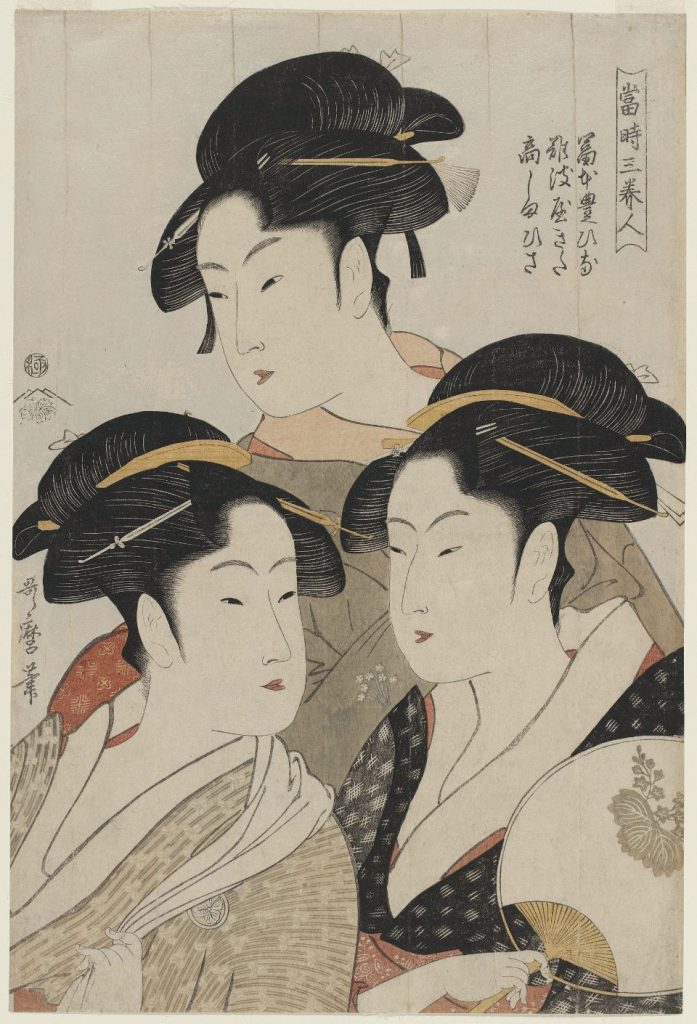
In this artwork, Utamaro Kitagawa has used delicate shading and subtle gradations to bestow an ethereal quality to the scene. Although the women all seem to be drawn the same way, the subtle differences such as the shape of the eyes or the fullness of their cheeks help in decoding their age and experience.
Shunga
Many would be perplexed to know that several of Kitagawa Utamaro paintings and prints were shunga, literally translating to pictures of spring. Despite the innocent translation, it was a commonly understood euphemism for sex. Utamaro Kitagawa represented sex in all its tenderness and glory. He did not shy away from portraying heterosexual or homosexual sexual relationships across generations. Although it may be bizarre, the sexual relationships between an older man and a younger man were often looked at as a teacher-student relationship.
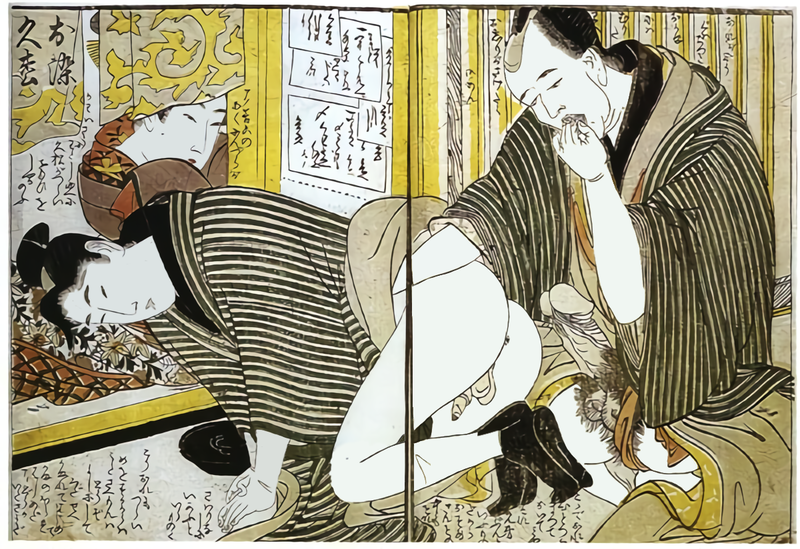
In this Kitagawa Utamaro artwork, ‘Client Lubricating A Male Prostitute’, the age of the two men was informed by their hairstyles and their features. The ‘Wakashū’ (prepubescent or pubescent) would often assume a passive role. They were characterized by their top knots and their delicate feminine features. At times, they dressed up in the kimonos and attire attributed to the geishas and young women. These ‘Wakashū, although young, were considered to be sexually mature, becoming a third gender in themselves; an object desired by both men and women.
Image Courtesy – Wikipedia
Uemura Shoen, Who Inspired and Portrayed Japanese Women in Painting
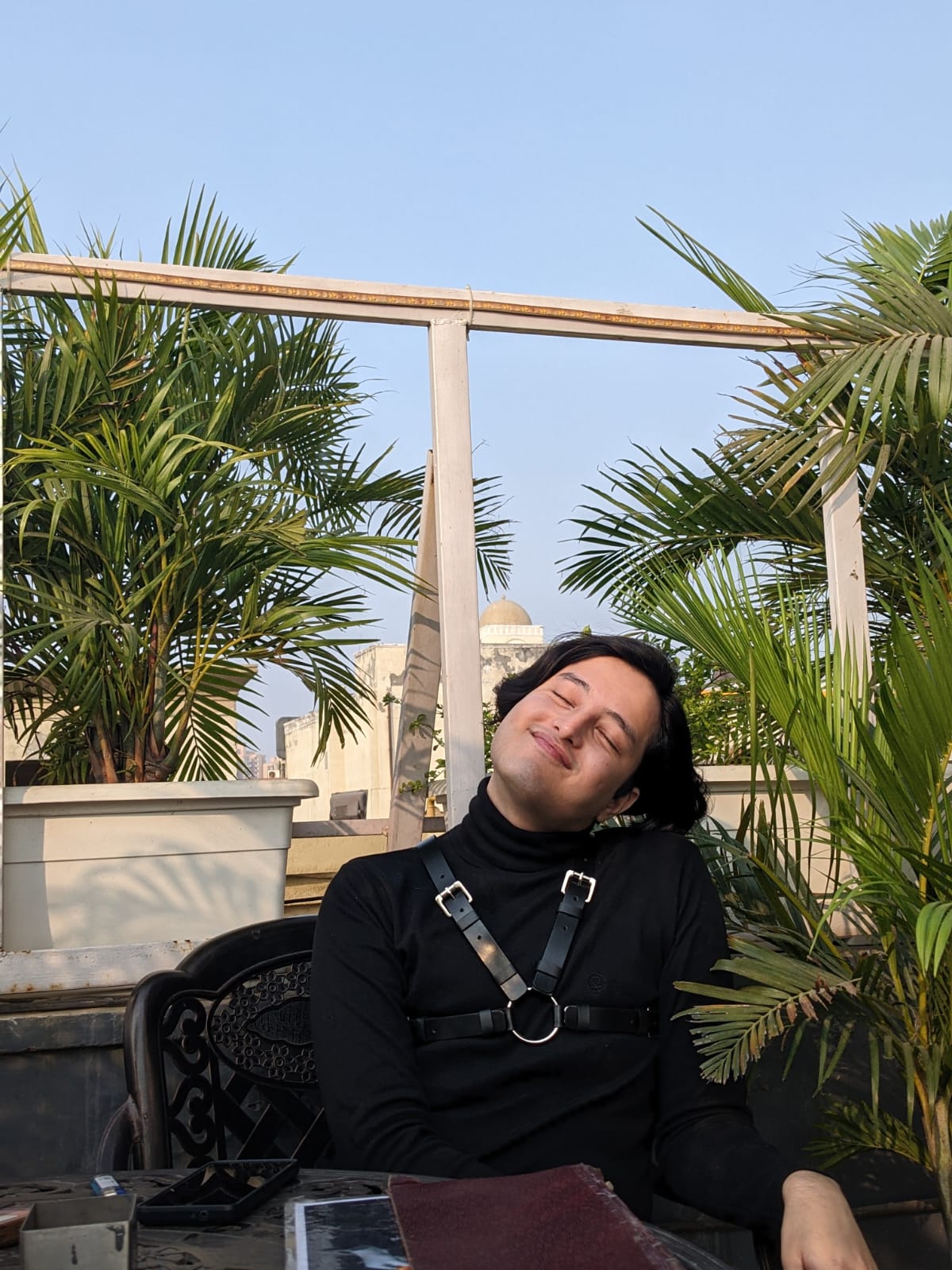
Hi Ya’ll !!
I love writing about pop culture and all things queer.
Sub Editor at Abir Pothi

